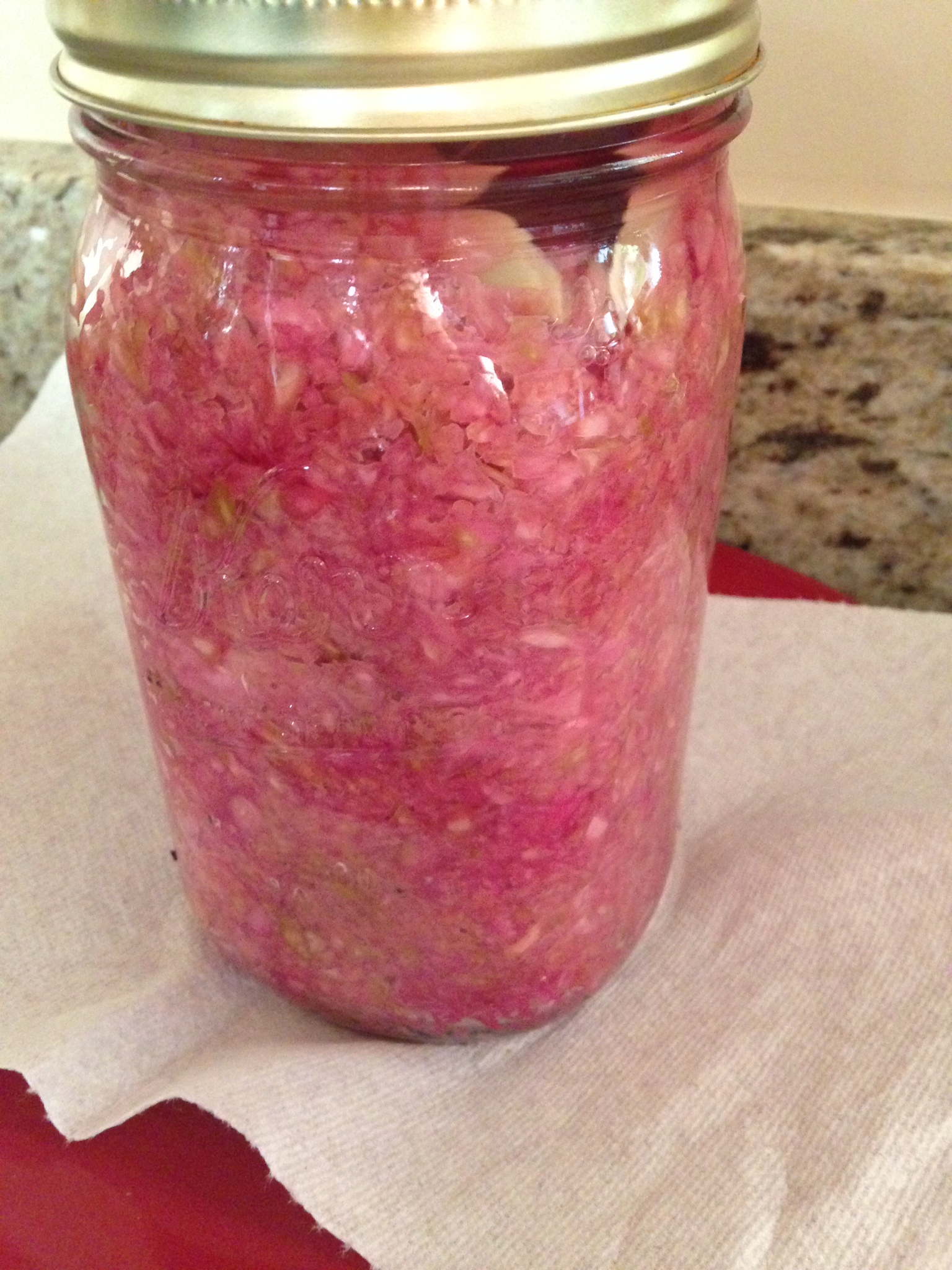Fermenting foods aids beneficial bacteria in the gut. The fermentation process predigests the food by living organisms so it is readily available for absorption in the body.
Making sauerkraut is extremely easy as the fermentation process requires only cabbage and salt. If using other vegetables that don’t break down and release its juices as well as cabbage, a brine may be required as well as adding live bacteria making it a “cultured” food. Sauerkraut and cultured veggies add a nice taste to a bowl of soup, salad, or warm grain dish to aid digestion of the meal and add beneficial bacteria in the gut.
Sauerkraut Recipe
- 1 head of green cabbage (save some outer leaves)
- 2 t sea salt
- 3 T lemon juice (or use just salt, add x3)
- Wide-mouth mason jars with tight fitting lids
- Set aside two cabbage leaves to top your jars of sauerkraut.
- Chop roughly and put in food processor or shred cabbage
- Place in large bowl, add salt and lemon juice, massage cabbage for 5 min.
- Let sit another 10 min and massage again until lots of water is released.
- Add dill or other herbs if desired.
- Spoon into Mason jar packing down firmly leaving 1 inch at top. Top kraut with cabbage leaf and push down to keep food below water level. Screw lid on tightly.
- Place jar on a paper towel on counter top (to see any leakage)
- Store on counter covered for 5-14 days or until kraut starts to leak or hiss. Open lid to release pressure, remove cabbage leaf and transfer to fridge. Will last several months.
Other foods such as coconut yogurt and kefir will bring in different strains of bacteria to your diet. A variety of bacteria is recommended for balancing the gut flora. When making yogurt or kefir, a “starter” is required which consists of adding healthy bacteria to the food. In this case, the products are called “cultured” as opposed to fermented as in yogurt or kefir. Find more recipes here. Enjoy.

